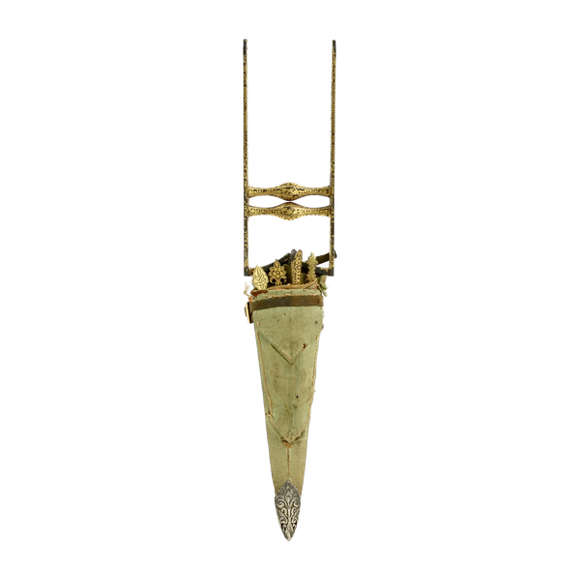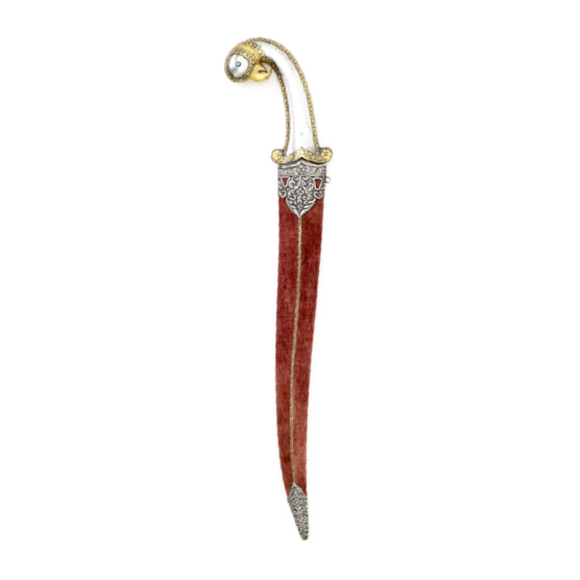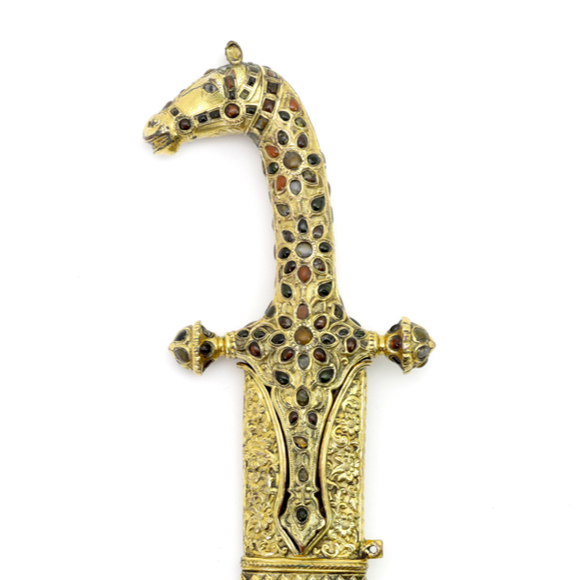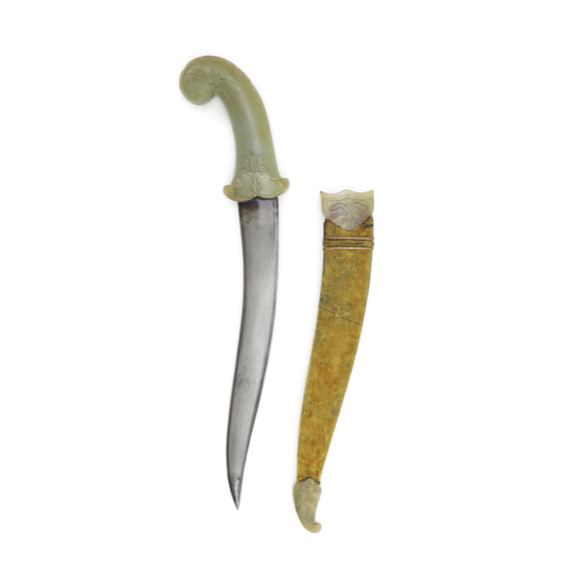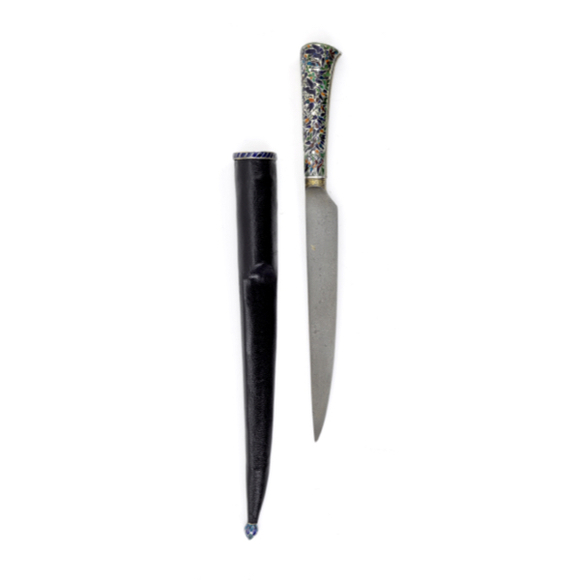With a fine wootz blade with a pronounced center ridge.

65 cm
Height 10.5 cm
Width 10.5 cm
385 grams
7 cm under head
Iron, wood, brass copper
North India
19th century
Description
A North Indian tribal axe. Very little is known about them in the literature, and the workmanship varies from tribal, like this one, to lavish gold decorated pieces in the Rajput style, with wootz steel.
This example has an iron head with brass animals attached to them. We see an elephant's head, a tiger, an antelope, and boar on each side. There is also a last animal head near the top of the blade that remains unidentified. The curved blade terminates in the stylized, semi-abstract antelope head complete with twisted iron horns.
Along edge and spine are inlaid a copper strip. So deep on the edge side that the cut goes all the way through where there is some loss.
One would think the construction is purely ceremonial, but the axe's shaft is reinforced with a strip of metal, held in place by three iron pins with brass flower shaped washers.
A very curious piece.







The style typical of Kutch, the execution far above what is normally seen on work from that area.
Nice and complete with opaque green hilt and scabbard mounts.
With designs of animals, often attributed to Lucknow, north India.

